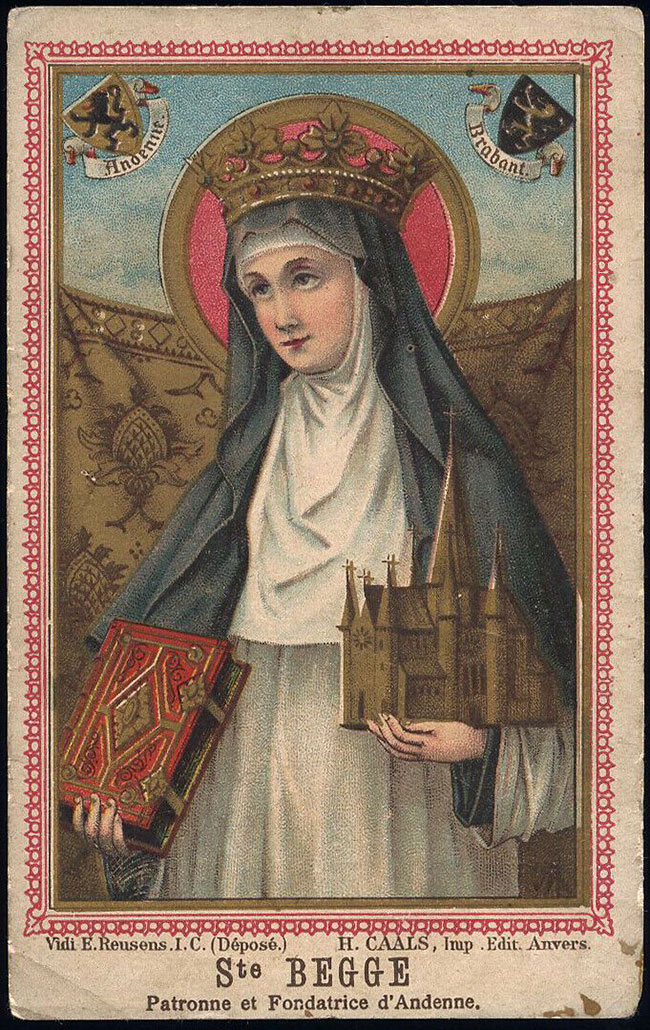DESPITE ROYAL CONNECTIONS, BEGGA’S BIO IS FULL OF GAPS

[Above: Saint Card of Begga—public domain because of age]
ROYAL CONNECTIONS COUNT for something. In the instance of Saint Begga of Andenne, royal ties ensured she was remembered in many painting and sculptures. However, not much is known of her life. If it were not for her famous descendants, she would likely not be depicted at all and the details of her life would be even scarcer.
Born c. 615, she was the daughter of Pepin of Landen and St. Itta. Pepin, mayor of the palace under kings Clothaire II, Dagobert I, and Sigebert II, was a significant figure in seventh-century Europe.
Begga’s younger sister bypassed marriage to become an abbess and is known to posterity as St. Gertrude of Nivelles. Begga, however, married a nobleman, the son of Arnulf and Doda (both of whom the church later declared to be saints). She and her husband, Ansegis, produced three children. Pepin d’Heristal was the most notable. One of his sons was the famous warrior, Charles Martel. Through Martel, Begga and Ansegisel had a great-grandson, Pepin the Short, founder of the Carolignian dynasty. A great-great-grandson was even more famous—Charlemagne.
Somewhere between the birth of her last child and 679, Begga was widowed. Some accounts say an enemy named Gundewin struck Ansegis but other accounts say he died in a hunting accident. Both may be true if the “accident” was staged. Begga made a pilgrimage to Rome, perhaps in 679, visiting seven of the city’s most celebrated churches. That year she was about sixty-four years old.
Late in life, she founded a convent at Ardenne on the River Meuse and became its abbess. She erected seven chapels in imitation of the churches she had seen in Rome. Nuns from her sister Gertrude’s abbey came to train the new community and brought with them books and Irish practices. (The Abbey of Nivelles had imported Irish priests.) Gertrude had already been dead thirty-three years; and, in keeping with the superstitions of the day, the nuns brought a piece of Gertrude’s bed with them. The relic supposedly worked miraculous cures. Consequently it was adorned with gold and precious stones.
Begga died on this day, 17 December 693, at the age of 78 and was buried in Ardenne. Four hundred years passed before someone wrote her life. By then most detail had vanished, and, in fact, even what we know is seriously muddled—a situation made worse when a seventeenth century biography embellished what little was known about her.
By then the Beguine movement was wrongly claiming Begga as its founder and had developed liturgies to honor her. On slender evidence, scholars claimed she and her associates had preached throughout the Netherlands. Beguines, who originated in thirteenth-century Netherlands, were religious women who practiced austerities and performed charities but did not take lifelong vows as nuns do.
—Dan Graves
----- ----- -----
For more about Begga's famous posterity, see Christian History #108 Charlemagne






